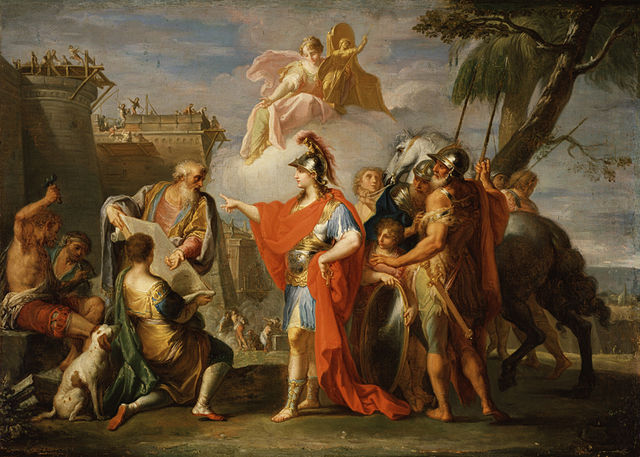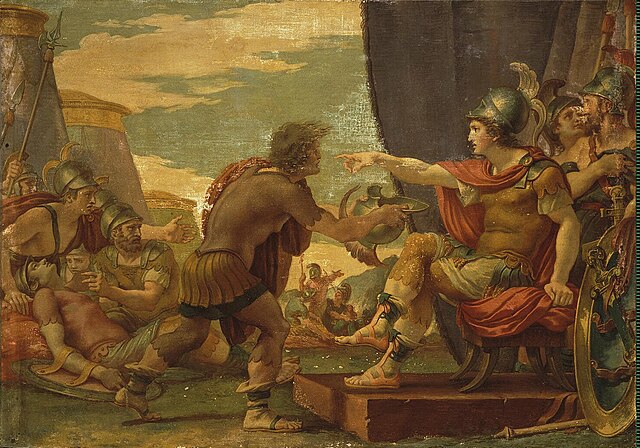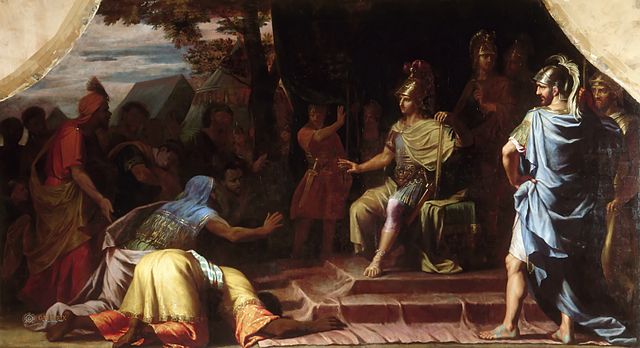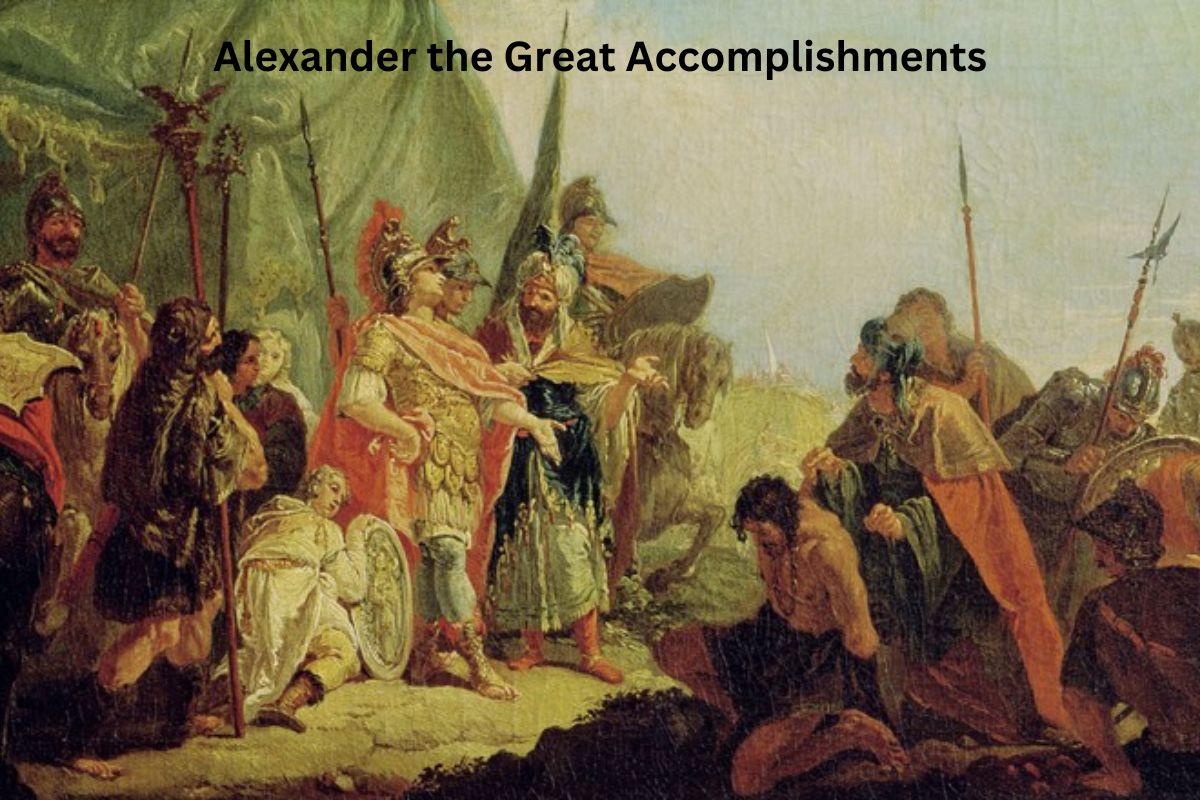Alexander the Great, born in 356 BC, was a renowned military leader and ruler of the ancient world. He achieved a series of remarkable accomplishments that left a lasting impact on history.
From his conquest of the Persian Empire to the spread of Hellenistic culture, Alexander’s achievements transformed the political, cultural, and military landscape of his time.
His strategic brilliance, military innovations, and ability to unite diverse cultures under his rule have inspired generations of leaders.
Today, he is remembered as one of history’s greatest conquerors and an iconic figure whose legacy continues to captivate and intrigue.
Accomplishments of Alexander the Great
1. Conquest of the Persian Empire
Alexander the Great embarked on a series of military campaigns with the goal of defeating the Persian Empire, which was one of the largest and most powerful empires of its time.
In 334 BC, he led his army across the Hellespont and began a series of decisive victories against the Persians, including the Battle of Granicus and the Battle of Issus.
Also Read: Alexander the Great Timeline
However, the turning point came at the Battle of Gaugamela in 331 BC, where Alexander’s forces delivered a crushing blow to the Persian army, leading to the collapse of the empire. This conquest marked a significant shift in power and established Alexander as the ruler of a vast empire.

2. Creation of an Empire
As Alexander expanded his conquests, he sought to unite the regions under his rule into a cohesive empire. He founded several cities, including Alexandria in Egypt, which served as strategic centers for administration, commerce, and culture.
Also Read: Alexander the Great Facts
Through a policy of integrating conquered peoples and allowing them to retain their local customs and traditions, Alexander created a multicultural empire that blended Greek and Persian influences.
He appointed local officials and encouraged intermarriage between Greeks and non-Greeks to foster unity.
3. Foundation of Alexandria
In 331 BC, Alexander founded the city of Alexandria at the western edge of the Nile Delta in Egypt. The city was strategically located for both political and economic purposes, providing access to the Mediterranean Sea and serving as a hub for trade between Europe, Asia, and Africa.
Alexandria became a vibrant center of intellectual and cultural exchange, attracting scholars, philosophers, and scientists from different parts of the world.
It housed the famous Library of Alexandria, considered one of the greatest libraries in history, which aimed to collect and preserve knowledge from across the empire.
The city’s lighthouse, known as the Pharos, was one of the Seven Wonders of the Ancient World and served as a symbol of Alexandria’s prominence.
4. Spread of Hellenistic Culture
As Alexander the Great conquered new territories, he aimed to spread Greek culture and ideals throughout his empire. This cultural diffusion, known as Hellenism, had a profound impact on the conquered regions.
Greek language, art, architecture, and philosophy became prominent, blending with local traditions and giving rise to a unique fusion of cultures.
The spread of Hellenistic culture influenced various aspects of life, including literature, sculpture, theater, and the adoption of Greek-style cities and urban planning.

5. Military Innovations
Alexander the Great revolutionized warfare through his innovative military tactics and strategies. He implemented the concept of the phalanx, a tightly packed formation of heavily armored infantry armed with long spears called sarissas.
The phalanx provided a formidable defensive line and allowed for coordinated offensive maneuvers. Alexander also utilized a skilled cavalry, which became known as the Companion Cavalry. This cavalry force was highly mobile and adept at flanking and enveloping enemy formations.
Furthermore, Alexander emphasized speed and maneuverability, adapting his tactics to different terrains and employing combined arms strategies that integrated infantry, cavalry, and siege engines.
6. Crossing the Hellespont
The crossing of the Hellespont, a narrow strait connecting the Aegean Sea to the Sea of Marmara, was a pivotal moment in Alexander’s campaigns.
In 334 BC, he led his army across this strategic waterway from Greece into Asia Minor, marking the beginning of his conquest of the Persian Empire. The crossing was a daring and audacious move, as it involved transporting a massive army across a challenging water passage.
It demonstrated Alexander’s resolve and his ability to overcome logistical challenges. Crossing the Hellespont symbolized his determination to expand his empire and marked a significant turning point in his military career.
7. Siege of Tyre
The siege of Tyre, a powerful island city in present-day Lebanon, was a notable accomplishment of Alexander the Great.
Tyre was known for its strong fortifications and maritime prowess, making it a formidable opponent. In 332 BC, Alexander laid siege to the city, but faced difficulties due to its location on an island just off the coast.
Undeterred, he devised an ingenious plan. Alexander ordered the construction of a causeway, using debris from the destroyed mainland city of Tyre and connecting it to the island. This remarkable engineering feat allowed his army to reach the city and launch a successful assault.
The fall of Tyre demonstrated Alexander’s strategic thinking and determination to overcome challenging obstacles.

8. Exploration of the Indus Valley
After the conquest of Persia, Alexander set his sights on the Indian subcontinent. In 326 BC, he led his army through the treacherous and unknown terrains of the Indus Valley.
This ambitious campaign marked an extraordinary feat of exploration as Alexander pushed his troops across vast rivers, deserts, and mountain ranges. His forces encountered numerous regional kingdoms, engaging in battles and forging alliances along the way.
Despite facing resistance, Alexander reached as far east as the Beas River, leaving a lasting impact on the region and opening up new trade routes between the Mediterranean and the Indian subcontinent.
9. Promotion of Religious Tolerance
Alexander’s approach to governance displayed a degree of religious tolerance that was unusual for his time. Rather than imposing Greek religious practices on the people he conquered, he adopted a policy of respect for the local customs and beliefs.
In Egypt, for instance, he embraced the Egyptian religious traditions and even claimed to be the son of the god Amun. In Persia, he honored Persian deities and participated in their rituals.
This policy of religious tolerance helped to maintain stability in the diverse regions of his empire and allowed for the integration of different cultures and religious practices.
10. Inspiration for Future Generations
Alexander’s accomplishments and his charismatic persona have left an enduring legacy that continues to inspire generations of leaders, conquerors, and military strategists.
His conquests, military innovations, and ability to unite diverse regions under his rule have served as a model for subsequent conquerors throughout history. Leaders like Julius Caesar and Napoleon Bonaparte admired and sought to emulate his military tactics.
His cultural influence, particularly through the spread of Hellenistic culture, played a significant role in shaping the development of Western civilization. The story of Alexander the Great continues to be studied, celebrated, and admired, making him one of the most legendary figures in history.
